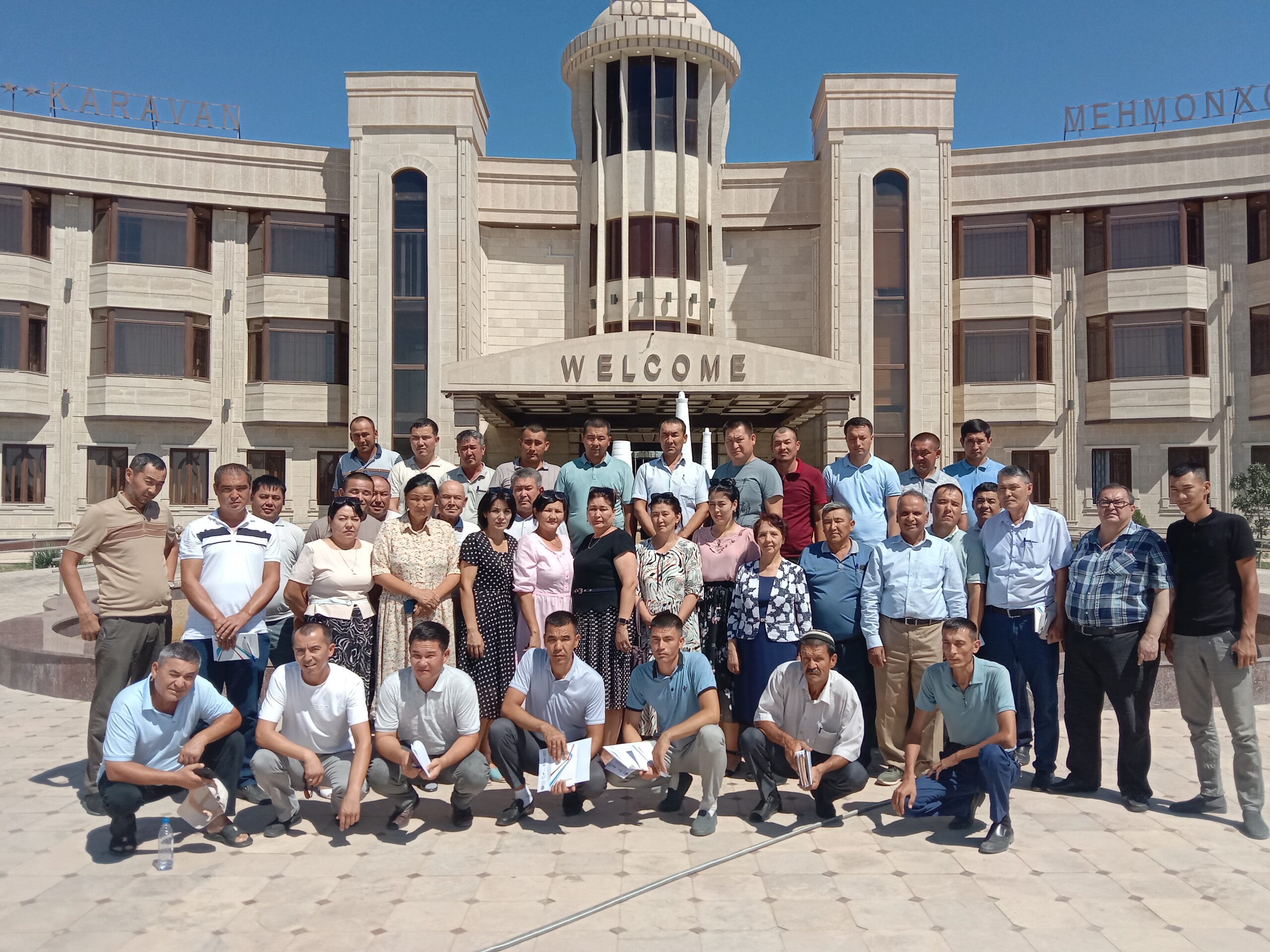ECO-ARAL in cooperation with the International Centre for agricultural research in the Dried Areas (ICARDA) selected ten farmers’ fields in Karakalpakstan and Khorezm region as piloting plots, to introduce crop diversification for increasing the economy and improvement of the soil quality in the Aral Sea region. Since then, the farmers are participating in the evaluation of innovative crop rotation plans to improve income and soil health compared to the traditional 2-year wheat-cotton rotation.
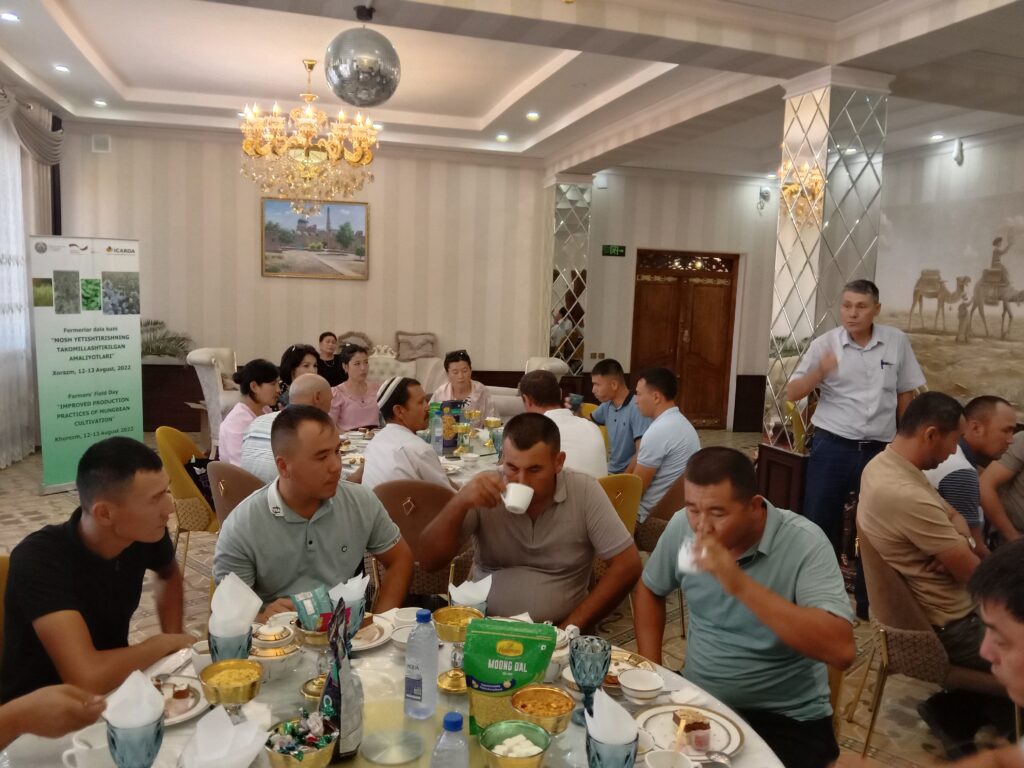
Following up the training programmes in June and field day events in July, on September 13 a field visit day in Khorezm region was conducted with 33 participates of a diverse group of farmers and researchers. The farmers in Karakalpakstan were invited to take part in the event. After welcoming speeches, the technical experts provided information on different aspects of the mungbean crops that would be observed while the field visit.

During the technical discussion two kinds of sweets and three different snacks, that were brought from Nepal, were displayed to motivate farmers to consider new products that can be prepared from mungbean. After lunch, the participants and the experts headed to the field sites.
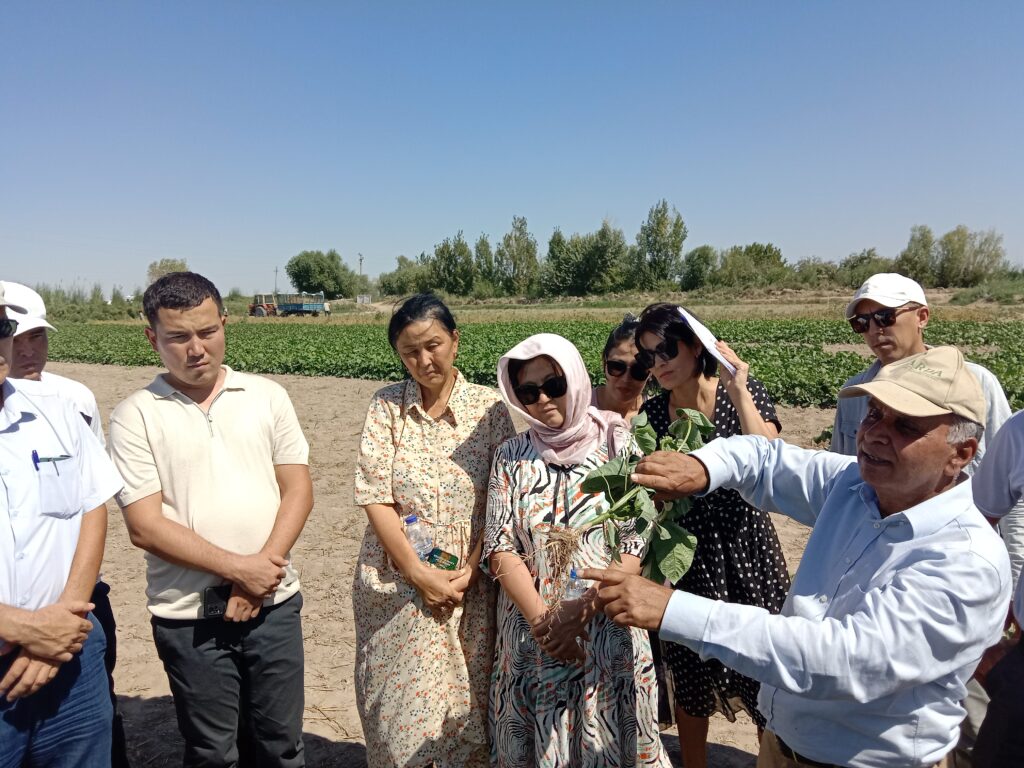
On the fields, the participants were explained how the crop growth will proceed later in terms of flowering, pod and grain formation. Since a few plants in the fields already had formed initial pods, the experts demonstrated the process of grain formation.
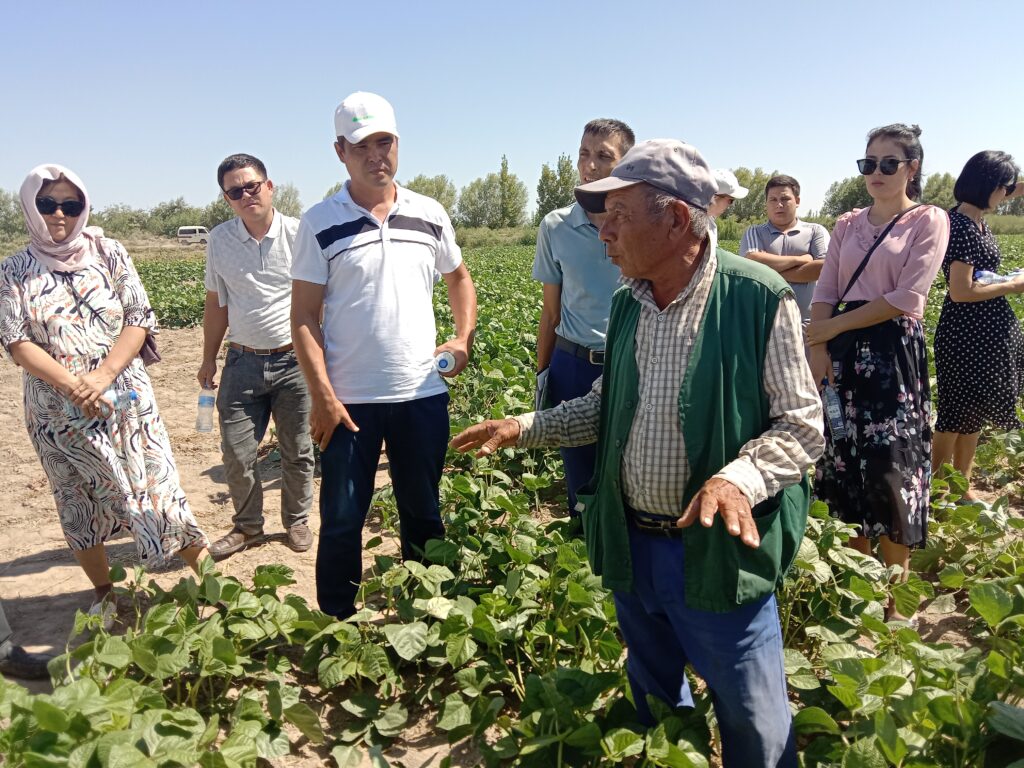
The participant-farmers acknowledged that they had not seen such a robust crop of growing mungbean before. The farmers repented about missing the opportunity to earn additional income in Karakalpakstan, because of water shortage, by not being able to plant mungbean on time. The participants also asked the farmers with good crops in the field in Khorezm about management practices adopted to raise the robust crop.
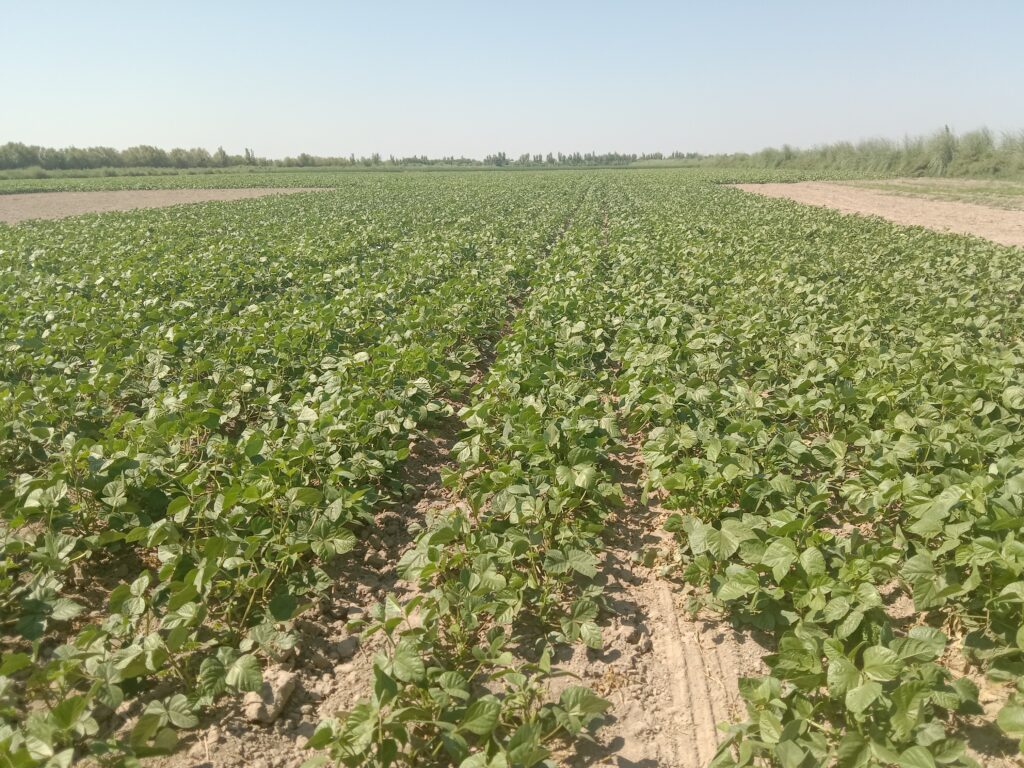
During the training programme in June on cultivation of mungbean, the farmers had learned that a leguminous crop like mungbean fixes atmospheric nitrogen into the soil. This improves soil health and reduces the application of nitrogen for the following crop, cotton in this case. Thus, farmers save money spent on nitrogenous fertilizers to the succeeding crop.
During the field day, it was demonstrated how to plant mungbean with uprooted and soil removed gently. After that, the farmers were able to see nodules (small beads like structure) on the roots of the mungbean plants. Nodules contain symbiotic bacteria. A point was mentioned that nodule formation needs the presence of suitable bacteria in the soil. If a given field had not been planted with any leguminous crop for 5 years continuously, it is likely that such soil may not have enough bacteria population for high level of nitrogen fixation. In such case, the mungbean seed should be coated with the culture of bacteria before planting.
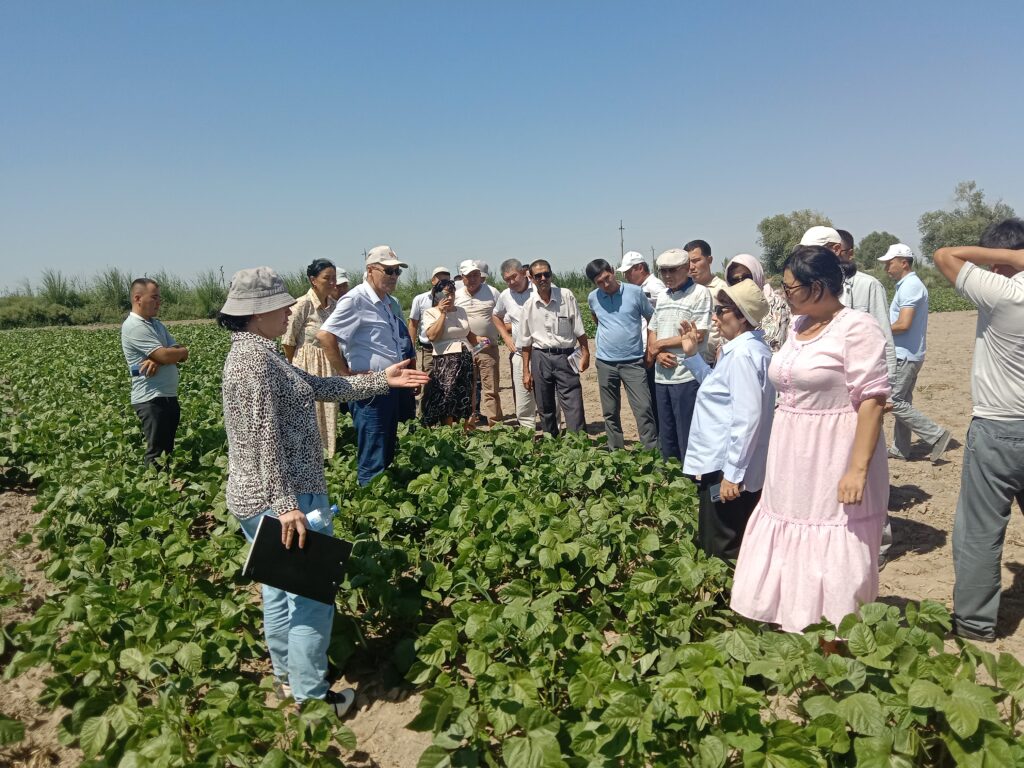
All participants from Karakalpakstan appreciated the opportunity of coming to Khorezm and study healthy crops of the improved mungbean variety Durdona and learning firsthand information about improved mungbean crop management. All farmers expressed their willingness to grow Durdona mungbean variety in 2023, benefit economically and improve soil health in their fields. However, many participants had concern if water would become available for timely sowing of mungbean in 2023. The farmers also mentioned the difficulty in marketing of mungbean in the local market.
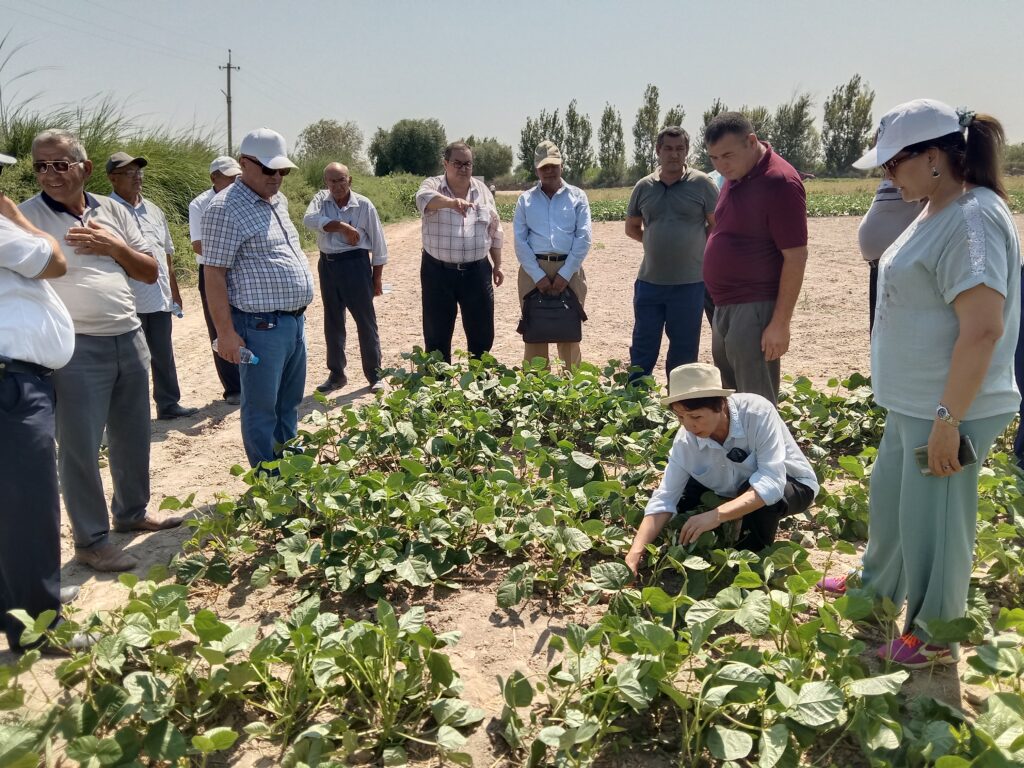
In the last week of September 2022, another farmers’ field day will be organized when mungbean crop would have matured in the timely planted fields. A training event will also be organized for providing information to the farmers on proper harvesting using machine, and post-harvest management of seed and grain during storage.
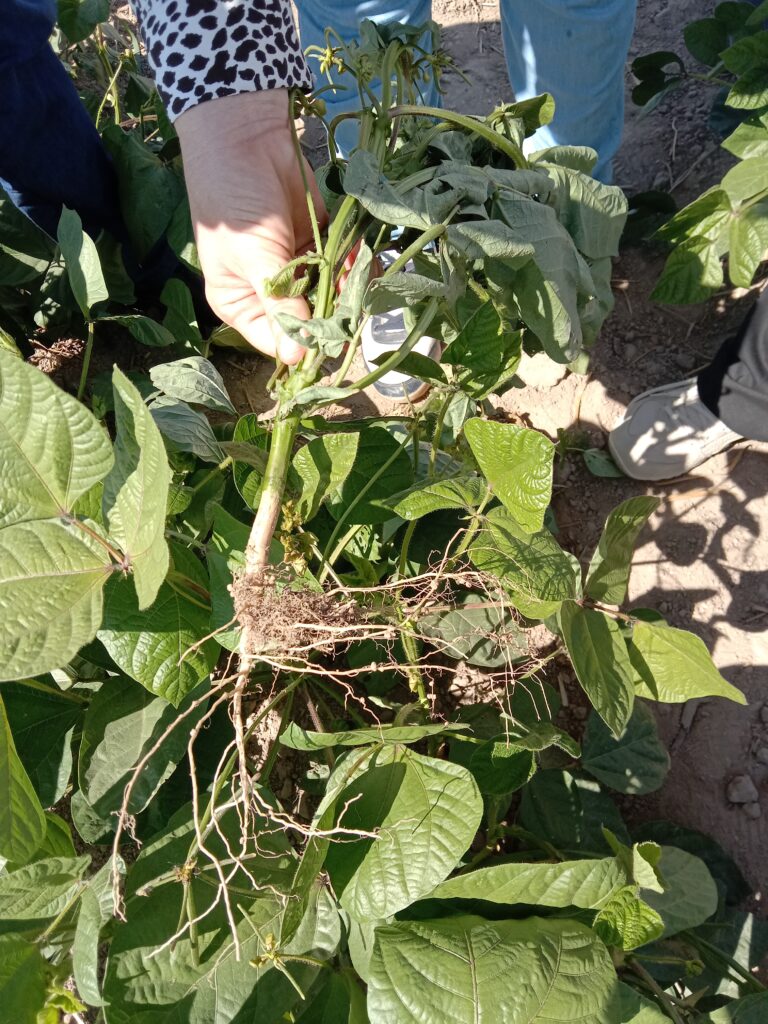
Photo: ©Bakhtiyor Khamidov/GIZ

